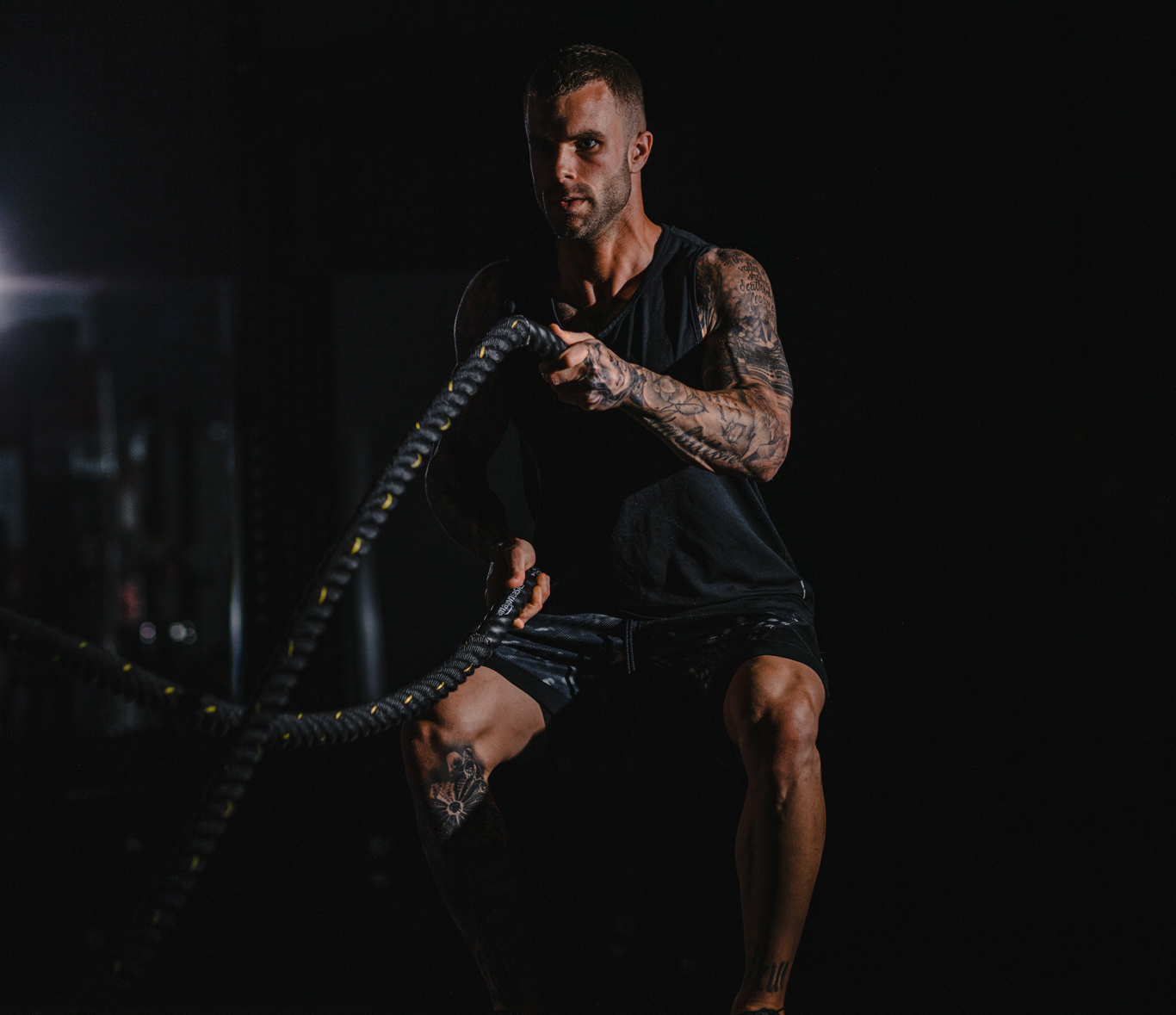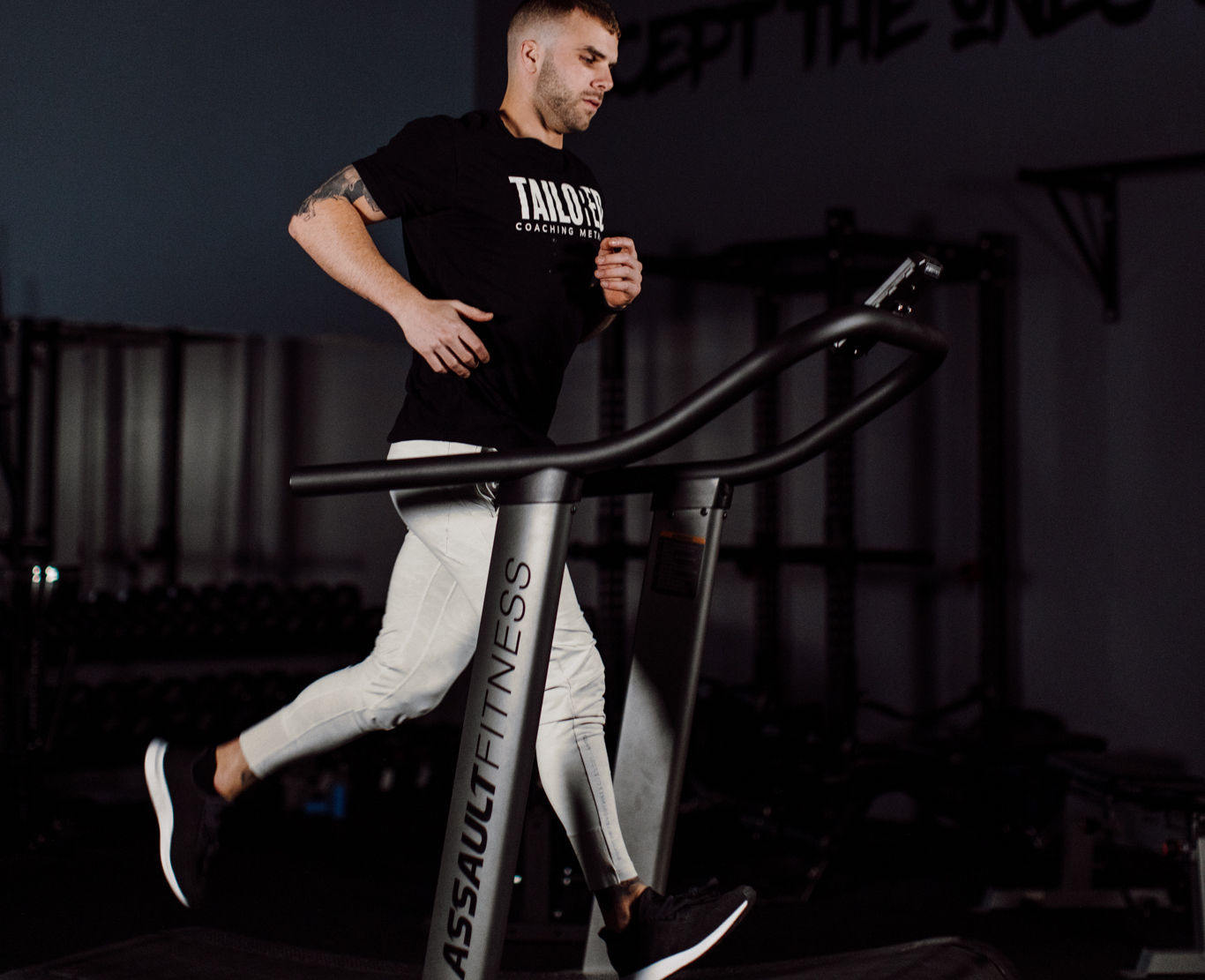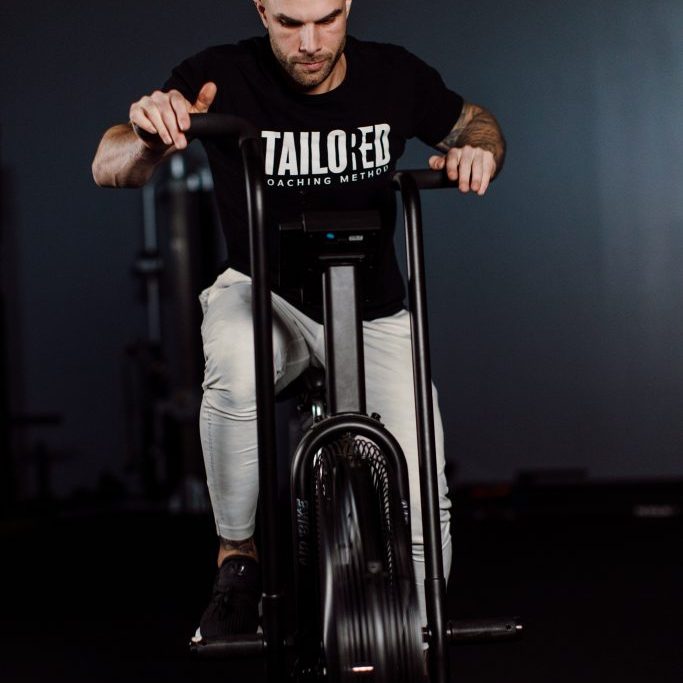HIIT vs. LISS: Which Works Best and When To Use Them
Introduction
A common question is “Should I do HIIT or LISS?” — There are some nuances to the answer, so in this blog we’ll cover the science behind high intensity interval training (HIIT) and low intensity steady state (LISS) training from a practical and physiological view, discussing the benefits of each form of exercise. Then, we’ll cover when and how to use them for general health, fat loss, muscle growth, or to improve performance; ultimately answering the question… Which form of cardio works best for fat loss?
But before we can give you that answer, we need to dive into some of the research behind the cardio modalities.
And to better understand the research in this blog there is one key term you should know – VO2max, which is the main outcome of many studies mentioned. VO2max is a measure of the maximum amount of oxygen your body can utilize during exercise. The procedure involves wearing a mask that measures oxygen consumption and carbon dioxide (CO2) production (video example here).
Alright… now let’s talk cardio science!
The Science Behind HIIT and LISS Cardio
High Intensity Interval Training (HIIT)

The definition of high intensity interval training (HIIT) is not ubiquitous in fitness or research. One recent review defined HIIT as “either repeated short (<45 s) to long (2–4 min) bouts of rather high- but not maximal-intensity exercise, or short (<10 s, repeated-sprint sequences) or long (>20–30 s, sprint interval session) all-out sprints, interspersed with recovery periods.”
Put simply, HIIT is a series of intense bouts of exercise interspersed by periods of rest. The ratio of work:rest for HIIT ranges from 1:1 to 1:10. For example, one of the most well-known HIIT workouts is Tabata, which consists of 8 sets of 20-seconds of exercise at an intensity of about 170% of VO2max with a 10-second rest between each bout (2:1 work:rest ratio).
Another example is the “Norwegian” 4 x 4 protocol, where four 4-minute bouts are performed at a heart rate (HR) between 85 and 95% HR max, interspersed with 3 minutes of recovery at ~70% HR max (4:3 ratio). One of the most famous protocols involves four to seven “all-out” 30-second Wingate tests with 4 minutes of recovery (1:8 ratio).
Another example is a protocol that uses ten 1-minute intervals at 90-95% HR max separated by 1 minute of activity recovery, which is known as sprint interval training (SIT) and is considered a form of HIIT that falls on the highest end of the intensity spectrum.
As you can see, there is a lot of variability between HIIT protocols. Plus, the practical application of these specific protocols is not great, so people end up adapting them to fit the equipment they have. The important component in all of these protocols is exercising near or at maximal effort (HRmax) for short periods. Then taking a break and doing it again.
Several meta-analyses have been completed on the effects of HIIT. In 2013, one of the first metas on HIIT found that the mean change in VO2max when using HIIT was 0.51 L · min−1 in response to 6-13 weeks of HIIT with higher volume HIIT eliciting even greater improvements (0.8-0.9 L · min−1). These findings translate to a 5-15% increase in endurance capacity depending on someone’s initial fitness level.
Another meta-analysis, focused on SIT, found that VO2max increased by 4-13%. Specifically, the analysis found the mean improvements in VO2max after 2 weeks of SIT were 6.8% compared to 9.6% after 4–8 weeks. Given the potential differences in HIIT and SIT (i.e., intensity) two meta-analyses have been completed comparing them and both have found no statistically significant difference in the change in VO2max following HIIT vs SIT. This means that we have flexibility in choosing which HIIT protocol to incorporate into an exercise program if our goal is to enhance performance.
The logic behind HIIT training is that it produces a large adaptive response by virtue of recruiting a broader population of muscle fibers and by providing a larger cardiorespiratory signal to adapt. On the physiological level, six sessions of HIIT training, totalling ∼15 minutes of all out cycle exercise over 2 weeks, can increase skeletal muscle oxidative capacity as reflected by the protein content of mitochondrial enzymes. If you remember back to Biology 101, mitochondria are the powerhouses of the cell, so more enzymes essentially increase your exercise performance.
In addition to increasing muscle oxidative capacity, other adaptations such as an increase in resting glycogen content and a reduced rate of glycogen utilization result in improved fuel utilization while exercising. Other benefits such as an increased capacity for whole-body and skeletal muscle lipid oxidation – which means the body can better utilize fat stores – is paired with enhanced peripheral vascular structure and function.
Practically, all of these changes cause the improved exercise performance we see in the meta-analyses.
On the metabolic side, high intensity interval exercise performed over two weeks can substantially improve both insulin action and glucose homeostasis in sedentary young males. This means that even a small amount of HIIT can improve the way the body deals with glucose.
HIIT has also been shown to improve cardiovascular fitness in a range of populations, including people with coronary artery disease, congestive heart failure, and overweight adolescents. Ultimately, HIIT is a proven method to increase endurance performance and/or improve overall health.
Low Intensity Steady State (LISS)

LISS involves slow aerobic activity such as walking, jogging, swimming or cycling. By definition, LISS is much easier than HIIT and often an easier place to start exercising for sedentary people. LISS involves training at 50-70% of VO2max or HRmax for 30 to 60 minutes. To put that into perspective, a 30 year old person can estimate their HRmax by using the equation 220-age, and find their HRmax is roughly 190 bpm. Doing some quick math tells us that their LISS HR goal would be between 80-133 bpm. As far as benefits, one study found that LISS can improve fat oxidation and ATP resynthesis, resulting in enhanced recovery ability and general aerobic endurance in adults with 1 hour of LISS 4 times a week for 4 weeks. Another study had sedentary middle-age men walk briskly for about 30 minutes each day for a year and found improvements in fitness endurance, but no changes in body composition compared to controls.
The biggest proponent of LISS is the American College of Sports Medicine (ACSM), which suggests moderate-intensity aerobic activity for a minimum of 30 minutes on 5 days each week to promote and maintain health. Moderate-intensity aerobic activity, which ACSM describes as a brisk walk, can be accumulated toward the 30-minute minimum by performing bouts each lasting 10 or more minutes. Furthermore, LISS – if incorporated as recommended by ACSM – can protect against chronic diseases, prevent unhealthy weight gain, and help sustain weight loss in adults who have lost substantial body weight.
To be honest, the research on LISS isn’t as exciting as HIIT. That’s because the physiological changes take a lot longer and the studies are focused on general health, not necessarily performance or muscle gain. Plus there is no research directly comparing LISS to HIIT for things like fat loss, muscle gain, or performance. Most of the research compares moderate intensity continuous training (MICT) to HIIT.
Practical Application
General Health
One of the main barriers to participation in exercise programs is a perceived lack of time, so one of the appeals of HIIT training is that it represents a more time efficient way to accomplish the goals of exercise. Some evidence suggests that HIIT is more enjoyable than other types of exercise, but if you ask anyone that question in the middle of a HIIT session they’ll surely disagree. From a general health perspective, if you only have time for one type of exercise HIIT is the one to go with, but if you’re hesitant to use high intensities or have injuries to work around LISS can be an excellent option. The benefit of not having specific goals is that you can incorporate either HIIT and/or LISS into your program to get the overall benefits of cardiovascular exercise.
Fat Loss
For fat loss, both HIIT and LISS can be beneficial, but LISS is easier to recover from and can usually be incorporated into a daily routine more easily. For example, adding a 30-60 minute walk is an easy way to burn extra calories. During LISS you could make phone calls, listen to audiobooks, watch TV/videos, or potentially even study or read. HIIT doesn’t allow the passive consumption of content, but can be done much quicker (15-30 minutes). On a calorie-equivalent basis they will both help with fat loss, so personal preference plays a big role in choosing which is better.
Muscle Gain
For muscle gain, or at least for maximizing the amount of muscle on the body, LISS is probably the best option for most people. It will allow you to complete more training volume without worrying about being recovered from a recent HIIT session. In our concurrent training blog, we wrote that there is very little data suggesting that concurrent training prevents muscle hypertrophy, so if your main goal is to increase muscle size, then plan your aerobic exercise so that it does not lower the intensity or volume you are able to do in your resistance training program. HIIT could be a better option than LISS if it does not increase in fatigue (or nagging injuries) over time. Importantly, to maximize muscle growth, do resistance exercise prior to aerobic exercise and separate them by at least 3 hours if completed on the same day.
Performance
For performance, especially anything with an anaerobic component, HIIT is a clear winner. As noted in the sections above, it can increase VO2max in a few weeks. It’s also a way to mimic sport-specific demands without having to play an actual game. However, in a training program the aerobic component should take into account the type of performance that needs to be increased. Likely this could involve a mix of HIIT and LISS together to get the benefits of a demanding training session from HIIT and the ability to increase recovery with LISS.
Coaches’ Conclusion — What’s Better For Fat Loss?!
Now that the research is covered, I’m {Cody Speaking} going to take a stab at giving YOU the answer to the original question.
The reality of this question is that there is not answer, because it’s such an individualized prescription, and it would be dogmatic to try and create ONE single answer. So the best solution to deciding whether you should be doing HIIT or LISS, to pursue your fat loss goals, is to determine the level of stress you’re under on a regular basis, both from lifestyle and from your fitness journey (i.e. — both training AND dietary), and examine your goals’ general timeline.
In other words, if you’re a high-stress individual, work a high-stress job, are in a large calorie deficit (which is high-stress by itself), and/or training with a lot of intensity or volume, making your training program high-stress as well, you may benefit most from using LOW intensity cardio as your means of creating more energy expenditure and fat loss.
On the contrary, if you do not have so many high-stress factors playing a role — you may benefit a lot from using HIGH intensity intervals for your choice of cardio.
And for those of you who are right in the middle, with an average amount of stress, there’s no reason you can’t use both simultaneously! In fact, this is often what we see as the best strategy for using cardio as a fat loss tool. You can use a 50/50 blend or a 75/25 blend, favoring the one you prefer more. This can, and probably should, also change as the diet progresses along, because the longer the duration of your fat loss phase the more diet fatigue will accumulate.
I often will program 5 quick HIIT bouts, followed by a longer bout of LISS cardio. Example would be 5 rounds of 10-15 second sprints, with 1-2 minute rest periods. Then a cool down of 30 minutes incline walking on the treadmill. This will be a 40 minute total session and is a very effective fat loss cardio workout. I’ve also done 10-20 rounds of HIIT by itself on 1 day and 30-40 minutes of LISS by itself on another day, amounting to 2 total cardio sessions per week.
The main takeaway here, though, is simple… there’s rarely ever a “best approach” and more often than not it’s about assessing your current recovery level, lifestyle, schedule, and goals. Then determining the best route to take, based on what YOU can individually adhere to and recovery from most consistently.




















































































































































































































































































































































































































































































